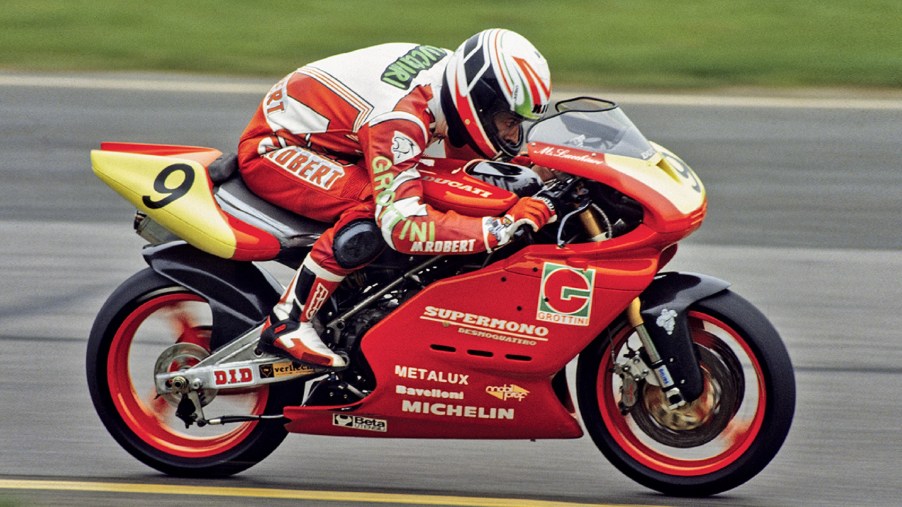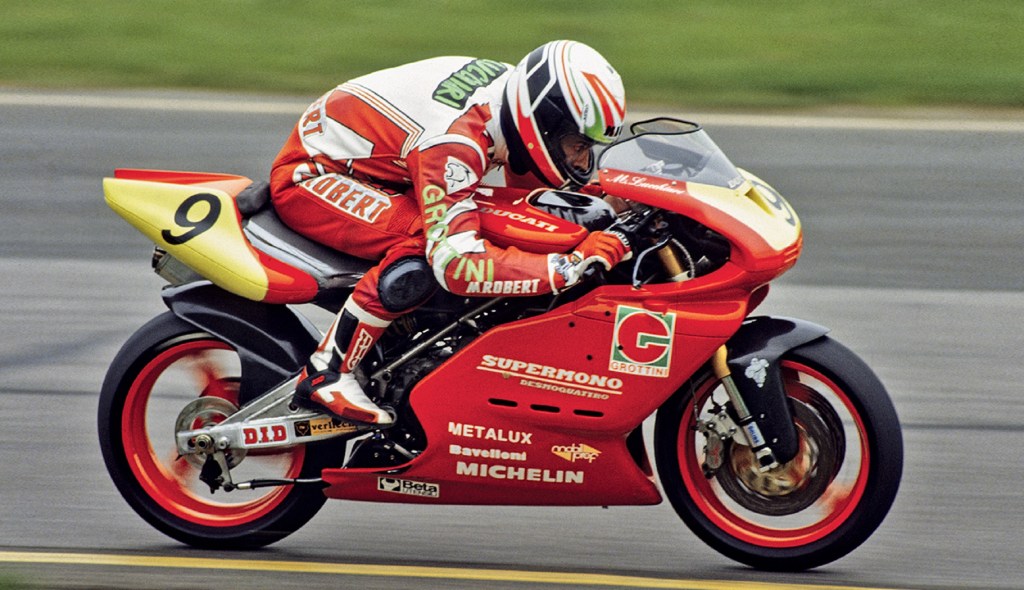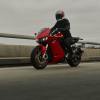
The Ducati Supermono: Single-Cylinder Superbike and 916 Preview
‘Icon’ is often overused today, but if any motorcycle deserves that title, it’s the Ducati 916. Nearly 30 years after its release, the superbike continues to influence Ducati bikes. But the 916 didn’t spring up out of nowhere. For one, its designer, Massimo Tamburini, was partially influenced by contemporary Japanese sportbikes. And two, the 916 followed in the style footsteps of a slightly smaller machine: the Ducati Supermono.
Before the 916 wowed the world, the Ducati Supermono shrieked onto the racetrack

Ducati’s status in the motorcycle world stems in part from its racing success. More specifically, from its World Superbike Championship success. Although Ducati’s MotoGP record is a bit patchy, it’s still the winningest manufacturer in WSBK. Four of those wins came from the Ducati 916 in the 1990s.
However, just like MotoGP and Formula 1, WSBK has several support classes that race on smaller-capacity machines. These classes change over time as technology and regulations evolve. Today, they include European Superstock’s 600cc bikes as well as World Supersports’ 400-600cc four-cylinders, 500-675cc triples, and 600-750cc twins. But in the 1990s, WSBK featured events like the Battle of Twins, the AHRMA explains. And in the European tradition of single-cylinder motorcycle racing, aka ‘Supermono’ racing, there was the Sound of Singles.
The Sound of Singles was created to bridge the gap between pro and club racing events, Hagerty says. But although the featured single-cylinder motorcycles weren’t as extreme as their four-cylinder counterparts, they were still racing machines. And while Ducati didn’t have a single-cylinder bike at the time, its history is littered with such racers, including the 1960s Mach 1. So, it decided to build a racing motorcycle specifically for the Sound of Singles.
That bike is the 1993 Ducati Supermono. Named after the racing class, it was styled by Pierre Terblanche under Tamburini’s direction, MCN explains. And its powertrain—which we’ll get to shortly—was designed in part by Ducati veterans Massimo Bordi and Claudio Domenicalli. If these names sound familiar, it’s because they also worked on the Ducati 916, which debuted one year later. So, it’s not that the Supermono looks like the 916: it’s the other way around.
550cc of fury and tech: the Ducati Supermono helped World Superbike echo with the Sound of Singles
That dream team of engineers and designers gave the Ducati Supermono more than just its looks. For 1990s riders, the Supermono “was an absolutely exotic, high-tech unadulterated racer,” RideApart says. And even by modern standards, it’s a seriously impressive machine.
The Ducati Supermono may have a tubular steel frame, but its fairing, front fender, airbox, rear subframe, seat cowl, and footpeg mounts are made of carbon fiber, Bonhams reports. Its engine covers, meanwhile, as well as the fork triple clamp and wheels, are made out of magnesium. Also, it doesn’t have a starter motor, because race bike. But thanks to all these weight-saving measures, it has a dry weight of 277 lbs, Cycle World says.
The exotic bits don’t stop there, though. It’s not uncommon today to see sportbikes with Ohlins fully-adjustable shocks, Brembo brakes, and Termignioni exhausts. But in the 1990s, those were rarified features. Ditto fuel injection, especially on single-cylinder engines.
And oh, what an engine. The Ducati Supermono has a liquid-cooled 550cc single-cylinder engine with 75 hp. That’s more power than the modern Vitpilen 701’s 693cc ‘thumper’ makes. Plus, the Supermono’s engine revs to 11,000 RPM, which means its piston moves as fast as the old F1 V10s, Hagerty notes. Then, in 1995 Ducati bored out the engine to 572cc, bumping the Supermono up to 81 hp, Bonhams says.
It’s not quite half of an 888’s engine, but it does borrow some features from it. That includes a ‘dummy’ connecting rod that Bordi left in to quell vibrations, RideApart notes. So, unlike some other large-capacity single-cylinder engines, the Supermono’s powerplant is smooth even at high RPM.
It might be even more iconic than the 916—not to mention rarer and more valuable
All this tech and performance makes the Ducati Supermono a fast, flickable, race-worthy vintage superbike. But being a racing motorcycle from the start, it wasn’t made in large numbers. Ducati only made 67 examples from 1993-1995, and virtually none were originally sold in the US.
As a result, the Supermono is even more coveted and valuable than the 916. A 1993 example sold at a 2019 Bonhams auction for $115,000. And that same bike appears to be currently listed on Stratas Auction’s site with an estimated $150,000-$175,000 value.
Six figures for a single-cylinder might sound exorbitant. But then, the Supermono is a superbike.
Follow more updates from MotorBiscuit on our Facebook page.


